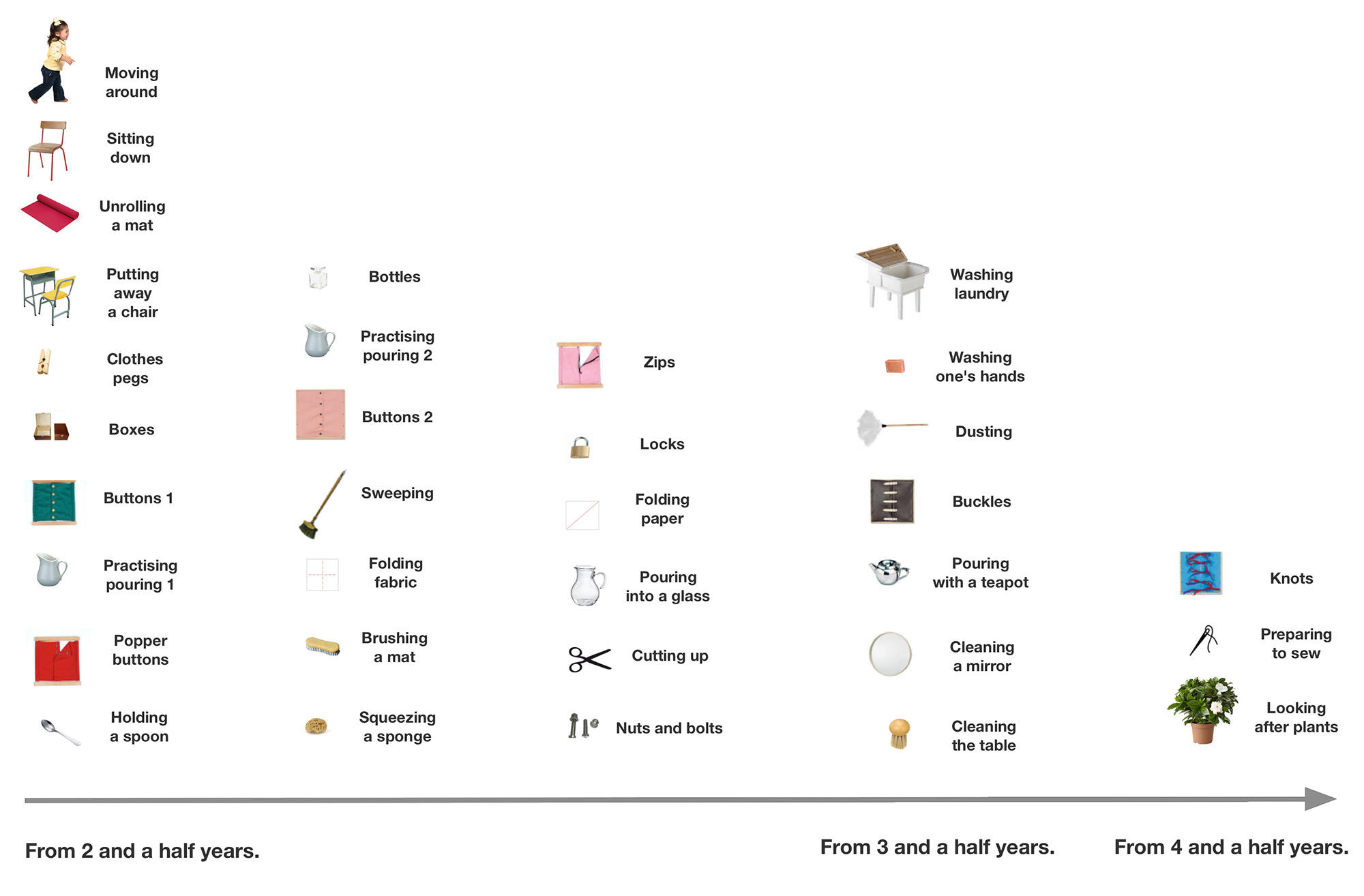Order of presentation of practical activities
We recommend that you present all these activities to children between the ages of 2½ and 4½. In other words, as soon as the children begin their first year, and ideally through till the end of the second year. Older children will be much less interested than the little ones in activities involving opening and closing clothes pegs, sweeping, buttoning and unbuttoning clothes, etc. The practical activities listed above are no longer challenging enough for most children aged over 5 and there's a danger that they will use the materials for other purposes out of boredom. It would therefore be a very good idea to offer older children different and more challenging activities such as weaving, sewing, looking after a vegetable garden, building huts or small pieces of wooden furniture, preparing a meal (such as a fruit or vegetable salad), making small items of clothing, etc. However, if you are starting your Year 0 or 1 with 5-year-old children and their executive skills have not so far been sufficiently developed, please go ahead and present some of these activities to them as they may still find them challenging.
In what order should these activities be presented?
Here is a table which can serve as a guideline when you're getting started. You can download the table here. The simplest activities are on the left. The level of difficulty increases as you move to the right.

We've arranged the activities by columns. Each column contains activities of the same level of difficulty, so you could start by presenting the activities in the first column to children aged 2½ and then move onto the next column. Needless to say, we urge you to adapt your approach to each individual child: if a child is capable, you should feel free to present to them activities from the next column even if you haven't presented all the activities in the previous column. It is important to always offer to each child an activity which is sufficiently difficult to challenge their executive skills so that they can genuinely exercise these skills. The child will give you indications as to whether the activity is suitable for them or not: if the activity is too simple or too difficult, they will start using the materials for other purposes...
However, we need to be clear about this: initially, you'll often misjudge which is the right activity, and this is completely normal and desirable even. The more you try things out, even at the risk of making a mistake, the sooner you'll learn when it's the right moment to present a particular activity. This trial and error approach will allow you to develop your own expertise. So have a look at this table just to reassure yourself, and then forget it!. Taking the plunge and experimenting is the only true way of understanding which order activities should be presented in.
Bear just two things in mind.
The complex activities such as cleaning a table, washing laundry, looking after a plant, cleaning a mirror, pouring from a teapot, etc., require a command of several simple physical motions like pouring, folding, opening and closing clothes pegs, bottles or boxes, cutting up, squeezing a sponge, etc. Before presenting to the children complex activities which call on several of these motions at the same time, it is therefore important to work first on activities which isolate these simple motions and give the children the chance to practise them.
You can also provide a progressive framework for practising some of these simple motions. For example, we had three trays for the action of 'pouring' which contained activities of increasing difficulty: pouring with grains, pouring with sand, pouring with water and finally pouring from a teapot.
Enjoy your explorations!

